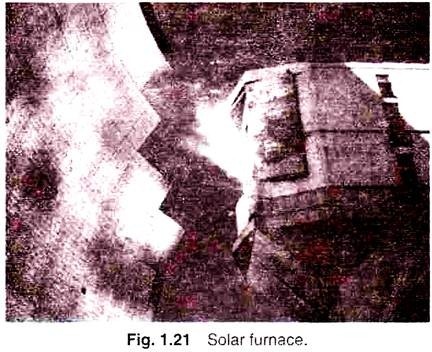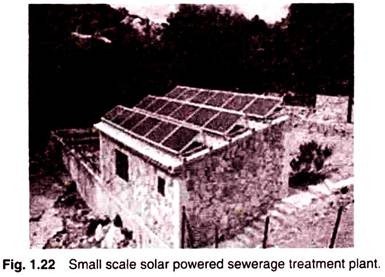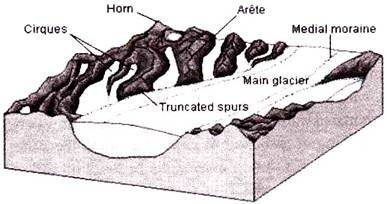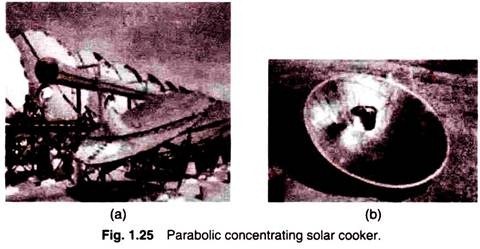ADVERTISEMENTS:
After weathering processes have had their actions on the earth materials making up the surface of the earth, the geomorphic agents like running water, groundwater, wind, glaciers, waves perform erosion. Several related landforms together make up landscapes, (large tracts of earth’s surface).
Landforms once formed may change in their shape, size and nature slowly or fast due to continued action of geomorphic processes and agents. Geomorphology deals with the reconstruction of the history of the surface of the earth through a study of it forms the materials of which it is made up of and the processes that shape it.
Following paragraphs contain description of each of the geomorphic regimes, i.e., running water, groundwater, glaciers, waves and winds. A brief description as to how landmasses are reduced in their relief through erosion and then, development of erosional and depositional landforms is given henceforth.
Essay # 1. Landforms by Running Water:
ADVERTISEMENTS:
In humid regions, which receive heavy rainfall running water is considered the most important of the geomorphic agents in bringing about the degradation of the land surface. Most of the erosional landforms made by running water are associated with vigorous and youthful rivers flowing along gradients. Overland flow causes sheet erosion. Depending upon irregularities of the land surface, the overland flow may concentrate into narrow to wide paths.
The divisions between drainage basins are likewise lowered until they are almost completely flattened leaving finally, a lowland of faint relief with some low resistant remnants called monadnocks standing out here and there. This type of plain forming as a result of stream erosion is called a peneplain (an almost plain).
The characteristics of each of the stages of landscapes developing in running water regimes may be summarized as follows:
i. Youth:
Streams are few during this stage with poor integration and flow over original slopes showing shallow V-shaped valleys with no floodplains or with very narrow floodplains along trunk streams. Streams divides are broad and flat with marshes, swamp and lakes.
ii. Mature:
During this stage streams are plenty with good integration. The valleys are still V-shaped but deep; trunk streams are broad enough to have wider floodplains within which streams may flow in meanders confined within the valley.
iii. Old:
ADVERTISEMENTS:
Smaller tributaries during old age are few with gentle gradients. Streams meander freely over vast floodplains showing natural levees, oxbow lakes, etc.
iv. Valleys:
Valleys start as small and narrow rills; the rills will gradually develop into long and wide gullies; the gullies will further deepen, widen and lengthen to give rise to valleys. Depending upon dimensions and shape, many types of valleys like V-shaped valley, gorge, canyon, etc. can be recognized.
A gorge is a deep valley with very steep to straight sides and a canyon is characterized by steep step-like side slopes and may be as deep as a gorge. In contrast, a canyon is wider at its top than at its bottom. In fact, a canyon is a variant of gorge. Canyons commonly form in horizontal bedded sedimentary rocks and gorges form in hard rocks.
v. Incised or Entrenched Meanders:
In streams that flow rapidly over steep gradients, normally erosion is concentrated on the bottom of the stream channel. Very deep and wide meanders can also be found cut in hard rocks. Such meanders are called incised or entrenched meanders.
vi. River Terraces:
River terraces are surfaces marking old valley floor or floodplain levels. They may be bedrock surfaces without any alluvial cover or alluvial terraces consisting of stream deposits. River terraces are basically products of erosion as they result due to vertical erosion by the stream into its own depositional floodplain.
The river terraces may occur at the same elevation on either side of the rivers in which case they are called paired terraces. When a terrace is present only on one side of the stream and nothing on the other side or one at quite a different elevation on the other side, the terraces are called non-paired terraces.
ADVERTISEMENTS:
vii. Floodplains, Natural Levees and Point Bars:
Normally, fine sized materials like sand, silt and clay are carried away by relatively slow moving waters in gentle channels usually found in the plains and deposited over the bed and the waters spill over the banks during flooding above the bed.
A river bed made of river deposits is the active floodplain. The floodplain above the bank is inactive floodplain. Such areas over floodplains built up by abandoned or cut-off channels contain coarse deposits. The flood deposits of spilled waters carry relatively finer materials like silt and clay. The floodplains in a delta are called delta plains.
Natural levees and point bars are some of the important landforms found associated with floodplains. Natural levees are found along the banks of the large rivers. They are low, linear and parallel ridges of coarse deposits along the banks of rivers, quite often cut into individual mounds.
During flooding as the water spills over the bank, the velocity of the water comes down and large sized and high specific gravity materials get dumped in the immediate vicinity of the bank as ridges. They are high nearer the banks and slope gently away from the river. Point bars are also known as meander bars.
They are found on the convex side of meanders of large rivers and are sediments deposited in a linear fashion by flowing waters along the bank. They are almost uniform in profile and width and contain mixed sizes of sediments.
viii. Meanders:
In large flood and delta plains, rivers rarely flow in straight courses. Loop-like channel patterns called meanders develop over flood and delta plains. Meander is not a landform but is only a type of channel pattern. Normally, in meanders of large rivers, there is active deposition along the convex bank and undercutting along the concave bank.
The concave bank is known as cut-off bank which shows up as a steep scarp and the convex bank presents a long, gentle profile and is known as slip-off bank. As meanders grow into deep loops, the same may get cut-off due to erosion at the inflection points and are left as ox-bow lakes.
ix. Braided Channels:
When rivers carry coarse material, there can be selective deposition of coarser materials causing formation of a central bar which diverts the flow towards the banks; and this flow increases lateral erosion on the banks. Deposition and lateral erosion of banks are essential for the formation of braided pattern.
Or, alternatively, when discharge is less and load is more in the valley, channel bars and islands of sand, gravel and pebbles develop on the floor of the channel and the water flow is divided into multiple threads. These thread-like streams of water rejoin and subdivide repeatedly to give a typical braided pattern.
Essay # 2. Landforms by Groundwater:
The surface water percolates well when the rocks are permeable, thinly bedded, highly jointed and cracked. Any limestone or dolomitic region showing typical landforms produced by the action of groundwater through the processes of solution and deposition is called Karst topography after the typical topography developed in limestone rocks of Karst region in the Balkans adjacent to Adriatic sea.
A. Erosional Landforms:
Pools, Sinkholes, Lapies and Limestone Pavements small to medium sized round to sub-rounded shallow depressions called swallow holes formed on the surface of limestones through solution. Sinkholes are very common in limestone/karst areas.
A sinkhole is an opening more or less circular at the top and funnel-shaped towards the bottom with sizes varying in area from a few sq. m to a hectare and with depth from a less than half a metre to thirty metres or more. Quite often, sinkholes are covered up with soil mantle and appear as shallow water pools.
The term doline is sometimes used to refer the collapse sinks. Solution sinks are more common than collapse sinks. When sinkholes and dolines join together because of slumping of materials along their margins or due to roof collapse of caves, long, narrow to wide trenches called valley sinks or Uvalas are formed.
Gradually, most of the surface of the limestone is eaten away by these pits and trenches, leaving it extremely irregular with a maze of points, grooves and ridges or lapies. Especially, these ridges or lapies are formed due to differential solution activity along parallel to sub-parallel joints.
Caves:
In areas where there are alternating beds of rocks (shales, sandstones, quartzites) with limestones or dolomites in between or in areas where limestones are dense, massive and occurring as thick beds, cave formation is prominent. Water percolates down either through the materials or through cracks and joints and moves horizontally along bedding planes.
It is along these bedding planes that the limestone dissolves and the result is long and narrow to wide gaps called caves. Caves normally have an opening through which cave streams are discharged. Caves having openings at both the ends are called tunnels.
B. Depositional Landforms:
Many depositional forms develop within the limestone caves. The chief chemical in limestone is calcium carbonate which is easily soluble in carbonated water (carbon dioxide absorbed rainwater). This calcium carbonate is deposited when the water carrying it in solution evaporates or loses its carbon dioxide as it trickles over rough rock surfaces.
Stalactites, Stalagmites and Pillars:
Stalactites hang as icicles of different diameters Stalagmites rise up from the floor of the caves. In fact, stalagmites form due to dripping water from the surface or through the thin pipe, of the stalactite, immediately below it.
Essay # 3. Glacial Landforms:
Masses of ice moving as sheets over the land (continental glacier or pidmont glacier if a vast sheet of ice is spread over the plains at the foot of mountains) or as linear flows down the slopes of mountains in broad trough-like valleys (mountain and valley glaciers) are called glaciers. We have many glaciers in our country moving down the slopes and valleys in Himalayas.
Higher reaches of Uttarakhand Himachal Pradesh and Jammu and Kashmir, are places to see some of them. River Bhagirathi is basically fed by meltwaters from under the snout (Gaumukh) of the Gangotri glacier. In fact, Alkapuri glacier feeds waters to Alaknanda river. Rivers Alaknanda and Bhagirathi join to make river Ganga near Deoprayag.
As glaciers continue to move, debris gets removed, divides get lowered and eventually the slope is reduced to such an extent that glaciers will stop moving leaving only a mass of low hills and vast outwash plains along with other depositional features.
A. Erosional Landforms:
Cirque:
Cirques are the most common of landforms in glaciated mountains. The cirques quite often are found at the heads of glacial valleys. They are deep, long and wide troughs or basins with very steep concave to vertically dropping high walls at its head as well as sides.
A lake of water can be seen quite often within the cirques after the glacier disappears. Such lakes are called cirque or tarn lakes.
Horns and Serrated Ridges:
Horns formed through headward erosion of the cirque walls. If three or more radiating glaciers cut headward until their cirques meet, high, sharp pointed and steep sided peaks called horns form. The divides between cirque side walls or head walls get narrow because of progressive erosion and turn into serrated or saw-toothed ridges sometimes referred to as aretes with very sharp crest and a zig-zag outline.
Glacial Valleys/Troughs:
Glaciated valleys are trough-like and U-shaped with broad floors and relatively smooth, and steep sides. The valleys may contain littered debris or debris shaped as moraines with swampy appearance. There can be hanging valleys at an elevation on one or both sides of the main glacial valley. Very deep glacial troughs filled with sea water and making up shorelines (in high latitudes) are called fjords/ fiords.
B. Depositional Landforms:
The unassorted coarse and fine debris dropped by the melting glaciers is called glacial till. Streams formed by melting ice at the bottom, sides or lower ends of glaciers. Some amount of rock debris small enough to be carried by such melt-water streams is washed down and deposited. Such glaciofluvial deposits are called outwash deposits. Unlike till deposits, the outwash deposits are roughly stratified and assorted. The rock fragments in outwash deposits are somewhat rounded at their edges.
Moraines:
They are long ridges of deposits of glacial till. Terminal moraines are long ridges of debris deposited at the end (toe) of the glaciers. Lateral moraines are formed along the sides parallel to the glacial valleys. The lateral moraines may join a terminal moraine forming a horse-shoe shaped ridge.
Many valley glaciers retreating rapidly leave an irregular sheet of till over their valley floors. Such deposits varying greatly in thickness and in surface topography are called ground moraines. The moraine in the centre of the glacial valley flanked by lateral moraines is called medial moraine.
Eskers:
When glaciers melt in summer, the water flows on the surface of the ice or seeps down along the margins or even moves through holes in the ice. These waters accumulate beneath the glacier and flow like streams in a channel beneath the ice. Such streams flow over the ground (not in a valley cut in the ground) with ice forming its banks.
Very coarse materials like boulders and blocks along with some minor fractions of rock debris carried into this stream settle in the valley of ice beneath the glacier and after the ice melts can be found as a sinuous ridge called esker.
Outwash Plains:
The plains at the foot of the glacial mountains or beyond the limits of continental ice sheets are covered with glacio-fluvial deposits in the form of broad flat alluvial fans which may join to form outwash plains of gravel, silt, sand and clay.
Drumlins:
Drumlins are smooth oval shaped ridge-like features composed mainly of glacial till with some masses of gravel and sand. The long axes of drumlins are parallel to the direction of ice movement. One end of the drumlins facing the glacier known as stoss end is blunt and steeper than the other end known as tail. The drumlins are formed due to dumping of rock debris beneath heavily loaded ice through fissures in the glacier.
Essay # 4. Coastal Landforms:
Coastal processes are the most dynamic and hence most destructive. Some of the changes along the coasts take place very fast. At one place, there can be erosion in one season and deposition in another.
Most of the changes along the coasts are accomplished by waves. When waves break, the water is thrown with great force onto the shore, and simultaneously, there is a great churning of sediments on the sea bottom.
Constant impact of breaking waves drastically affects the coasts. Storm waves and tsunami waves can cause far-reaching changes in a short period of time than normal breaking waves. As wave environment changes, the intensity of the force of breaking waves changes.
Other than the action of waves, the coastal landforms depend upon:
(i) The configuration of land and sea floor;
(ii) Whether the coast is advancing (emerging) seaward or retreating (submerging) landward.
Assuming sea level to be constant, two types of coasts are considered to explain the concept of evolution of coastal landforms:
(i) High, rocky coasts (submerged coasts);
(ii) Low, smooth and gently sloping sedimentary coasts (emerged coasts).
High Rocky Coasts:
Along the high rocky coasts, the rivers appear to have been drowned with highly irregular coastline. The coastline appears highly indented with extension of water into the land where glacial valleys (fjords) are present.
As the erosion along the coast takes place a good supply material becomes available to long shore currents and waves to deposit them as beaches along the shore and as bars (long ridges of sand and/ or shingle parallel to the coast) in the near shore zone.
Bars are submerged features and when bars show up above water, they are called barrier bars. Barrier bar which gets keyed up to the headland of a bay is called a spit. When barrier bars and spits formed at the mouth of a bay and block it, a lagoon forms.
A. Erosional Landforms:
Cliffs, Terraces, Caves and Stacks:
Wave-cut cliffs and terraces are two forms usually found where erosion is the dominant shore process. Almost all sea cliffs are steep and may range from a few m to 30 m or even more. At the foot of such cliffs there may be a flat or gently sloping platform covered by rock debris derived from the sea cliff behind.
Such platforms occurring at elevations above the average height of waves is called a wave-cut terrace. The lashing of waves against the base of the cliff and the rock debris that gets smashed against the cliff along with lashing waves create hollows and these hollows get widened and deepened to form sea caves. Retreat of the cliff may leave some remnants of rock standing isolated as small islands just off the shore.
Such resistant masses of rock, originally parts of a cliff or hill are called sea stacks. Like all other features, sea stacks are also temporary and eventually coastal hills and cliffs will disappear because of wave erosion giving rise to narrow coastal plains, and with onrush of deposits from over the land behind may get covered up by alluvium or may get covered up by shingle or sand to form a wide beach.
B. Depositional Landforms:
Beaches and Dunes:
Most of the sediment making up the beaches comes from land carried by the streams and rivers or from wave erosion. Beaches are temporary features.
Bars, Barriers and Spits:
A ridge of sand and shingle formed in the sea in the off-shore zone (from the position of low tide waterline to seaward) lying approximately parallel to the coast is called an off-shore bar. An off-shore bar which is exposed due to further addition of sand is termed as a barrier bar.
The off-shore bars and barriers are commonly formed across the mouth of a river at the entrance of a bay. Sometimes such barrier bars get keyed up to one end of the bay when they are called spits. The barriers, bars and spits at the mouth of the bay gradually extend leaving only a small opening of the bay into the sea and the bay will eventually develop into a lagoon.
Essay # 5. Landforms by Winds:
Wind is one of the two dominant agents in hot deserts. The desert floors get heated up too much and too quickly because of being dry and barren. The heated floors heat up the air directly above them and result in upward movements in the hot lighter air with turbulence, and any obstructions in its path sets up eddies, whirlwinds, updrafts and downdrafts. Deflation includes lifting and removal of dust and smaller particles from the surface of rocks. In the transportation process sand and silt act as effective tools to abrade the land surface.
The impact is simply sheer force of momentum which occurs when sand is blown into or against a rock surface. It is similar to sandblasting operation. In fact, many features of deserts owe their formation to mass wasting and running water as sheet floods.
Though rain is scarce in deserts, it comes down torrentially in a short period of time. The desert rocks devoid of vegetation, exposed to mechanical and chemical weathering processes due to drastic diurnal temperature changes, decay faster and the torrential rains help in removing the weathered materials easily.
A. Erosional Landforms:
Pediments and Pediplains:
Landscape evolution in deserts is primarily concerned with the formation and extension of pediments. Gently inclined rocky floors close to the mountains at their foot with or without a thin cover of debris, are called pediments.
Erosion starts along the steep margins of the land- mass or the steep sides of the tectonically controlled steep incision features over the landmass. Once, pediments are formed with a steep wash slope followed by cliff or free face above it, the steep wash slope and free face retreat backwards.
This method of erosion is termed as parallel retreat of slopes through backwasting. Through parallel retreat of slopes, the pediments extend backwards at the expense of mountain front, and gradually, the mountain gets reduced leaving an inselberg which is a remnant of the mountain. That’s how the high relief in desert areas is reduced to low featureless plains called pediplains.
Playas:
Plains are by far the most prominent landforms in the deserts. In basins with mountains and hills around and along, the drainage is towards the centre of the basin and due to gradual deposition of sediment from basin margins, a nearly levelled plain is formed at the centre of the basin. In times of sufficient water, this plain is covered up by a shallow water body. Such types of shallow lakes are called as playas. The playas plain covered up by salts is called alkali flats.
Deflation Hollows and Caves:
Weathered mantle from over the rocks or bare soil, gets blown out by persistent movement of wind currents in one direction. This process may create shallow depressions called deflation hollows. The rock faces suffer impact and abrasion of wind-borne sand and first shallow depressions called blow outs are created, and some of the blow outs become deeper and wider fit to be called caves.
Mushroom, Table and Pedestal Rocks:
Many rock-outcrops in the deserts easily susceptible to wind deflation and abrasion are worn out quickly leaving some remnants of resistant rocks polished beautifully in the shape of mushroom with a slender stalk and a broad and rounded pear shaped cap above. Sometimes, the top surface is broad like a table top and quite often, the remnants stand out like pedestals.
B. Depositional Landforms:
When the wind slows or begins to die down, depending upon sizes of grains and their critical velocities, the grains will begin to settle. So, in depositional landforms made by wind, good sorting of grains can be found. Since wind is there everywhere and wherever there is good source of sand with constant wind directions, depositional features in arid regions can develop anywhere.
Sand Dunes:
Dry hot deserts are good places for sand dune formation.
There can be a great variety of dune forms:
Barchans:
Crescent shaped dunes called barchans with the points or wings directed away from wind direction i.e., downwind, are formed where the wind direction is constant and moderate, and where the original surface over which sand is moving is almost uniform.
Parabolic dunes are formed when sandy surfaces are partially covered with vegetation. That means parabolic dunes are reversed barchans with wind direction being the same. Seif is similar to barchan with a small difference. Seif has only one wing or point. This happens when there is shift in wind conditions. The lone wings of seifs can grow very long and high.
Longitudinal dunes are formed when supply of sand is poor and wind direction is constant. They appear as long ridges of considerable length but low in height. Transverse dunes are aligned perpendicular to the wind direction. These dunes are formed when the wind direction is constant and the source of sand is an elongated feature at right angles to the wind direction.




